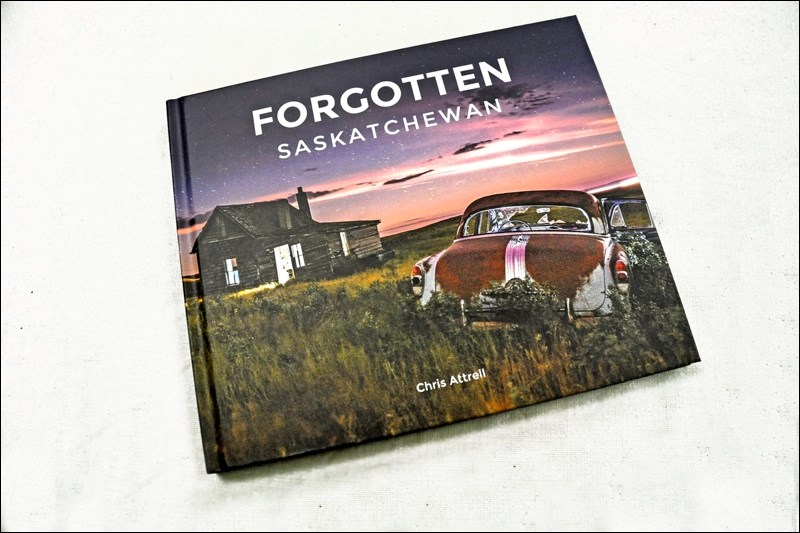Book Review
A 2019 photography book Forgotten Saskatchewan presents some startlingly beautiful imagery, as well as some nagging, self-reflective questions about Saskatchewan art.
Chris Attrell has been photographing Saskatchewan for 25 years, and his work has appeared in the National Post, the Saskatoon StarPhoenix and the Regina Leader-Post. According to the book’s introduction, the pictures were taken over the years in various places in the province.
Flipping through the roughly 140 pages of photos, interspersed with a few quotes, is an engaging experience. There are photos of elevators, houses, churches and vehicles long past their hey day. Much of the subject matter is located in farmers’ fields surrounded by grass or imposing masses of snow.
The book has a similar, timeless quality as the paintings in Jo Bannatyne-Cugnet’s Prairie Alphabet, and Attrell’s photos even have similar slivers of white emphasizing angles of the things photographed.
The amount of stone houses and churches in Saskatchewan is impressive. Some buildings, which could have been abandoned in the 1950s, don’t look much different in photos than religious structures built in England 900 years ago. Abandoned stone buildings evoke a tantalizing paradox that balances impermanence and materialism.
Saskatchewan doesn’t seem to be much of a brick province (even Winnipeg has brick buildings), which probably makes the brick buildings in the Battlefords a bit more special.
The prairie sky, and its transition to night, are featured throughout Attrell's book, as one would expect.
Subject matter is pictured at varying degrees of abandonment. Some of the houses are dilapidated and many of the vehicles are parked out in the field until the cows come home. Part of the bathroom floor in the Smuts hotel is missing and the Riverhurst grain elevator is in the process of demolition.
But some of the buildings, like the restored church in Goodeve, seem unoccupied just only at the moment the picture was taken.
One runs a risk by calling something “forgotten:” the author assumes everybody has forgotten. Quotation marks around “forgotten” on the book’s back in the photographer’s bio indicate less than full confidence in the word.
Many of the buildings and vehicles look genuinely forgotten, but many are still on someone’s property. Someone still cuts the grass near these places, and someone grew up in the old houses. Some parents, especially those who grew up in the country, have a stubborn tendency to show their kids where they grew up and tell stories of yore, whether the kids want to hear them or not.
I grew up nine miles from the Smuts hotel, but neither myself nor probably the kids who break into the building have forgotten the place. It’s just that hardly anybody goes to the Smuts hotel anymore for the reasons the building was originally intended. Grandpa used to drive that old truck left in the field, but ya know, it hasn’t worked since 1983. We still love Grandpa, and he’s not dead yet.
The book is a valuable contribution to the “abandoned farm stuff” genre, which is choice representative fodder for local and out-of-province artists.
But what does it say about rural Saskatchewan, that we’re loved for our old junk? The spareness of the book, I can’t help but think, implies farming, religion and rural life aren’t really relevant anymore.
One (imperial) ounce of criticism is how empty the book is of life forms. It’d be nice to see grandpa somewhere, or maybe a tastefully placed cow. Not including the occasional squiggle of a bird, a little flesh-and-blood could go a long way to humanize the book, and really the whole “abandoned farm stuff” genre. After all, we’re a province of characters.
The photos are great, but I’m inclined (and biased) to think stories of the people who lived in the material culture presented in the book are more interesting than the things they’ve left behind.




